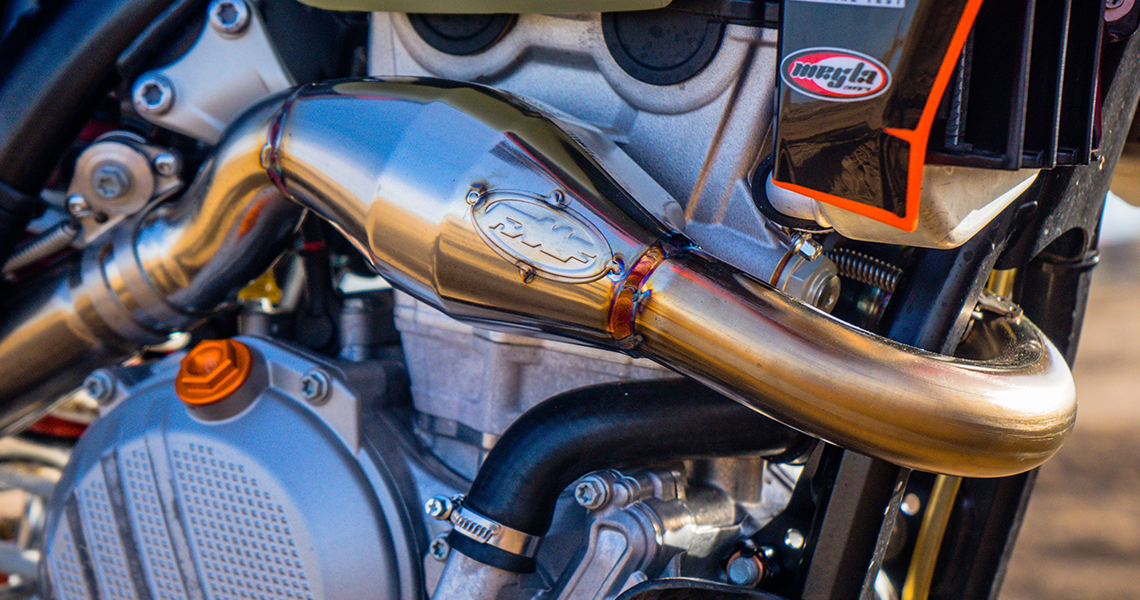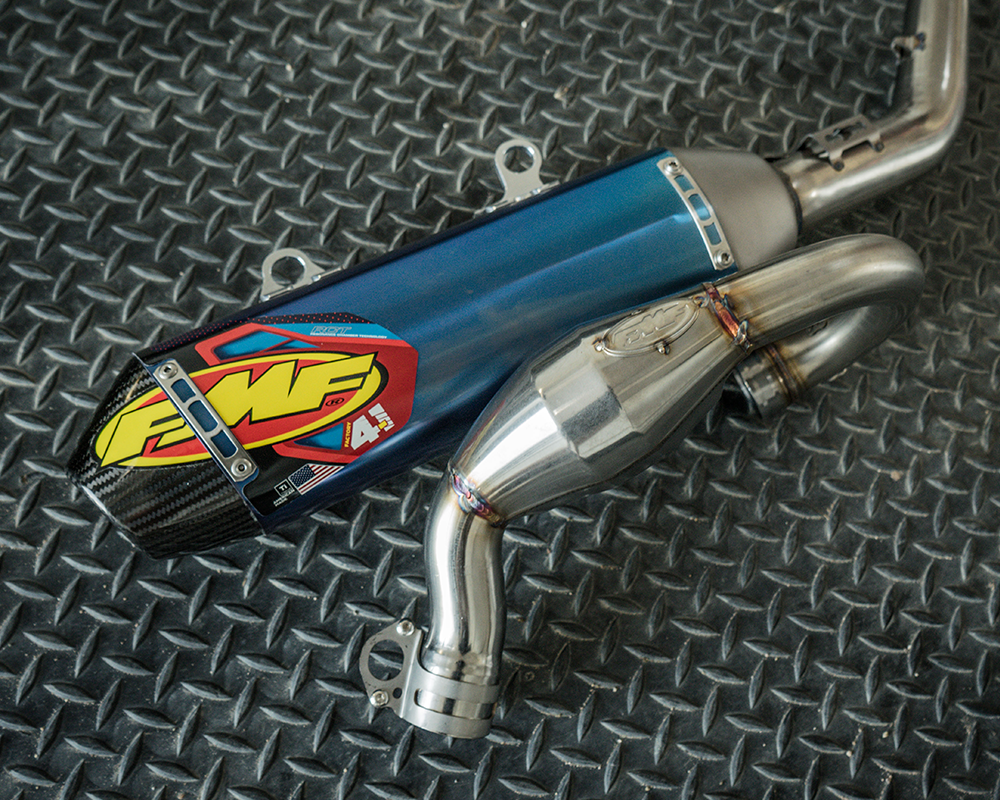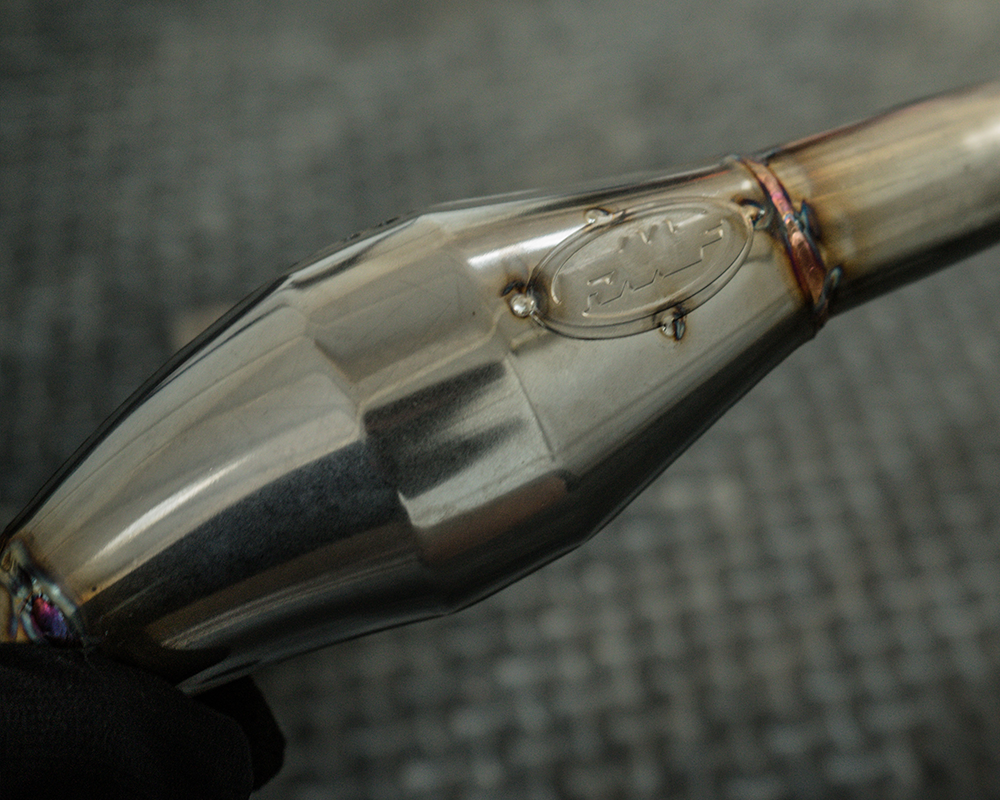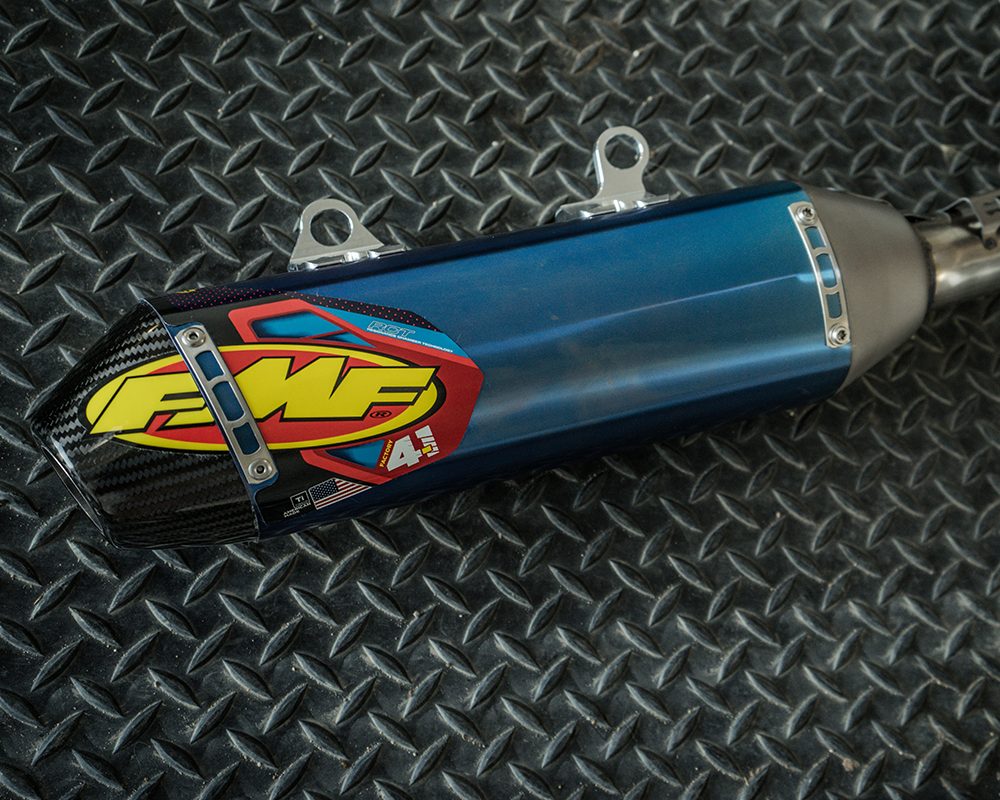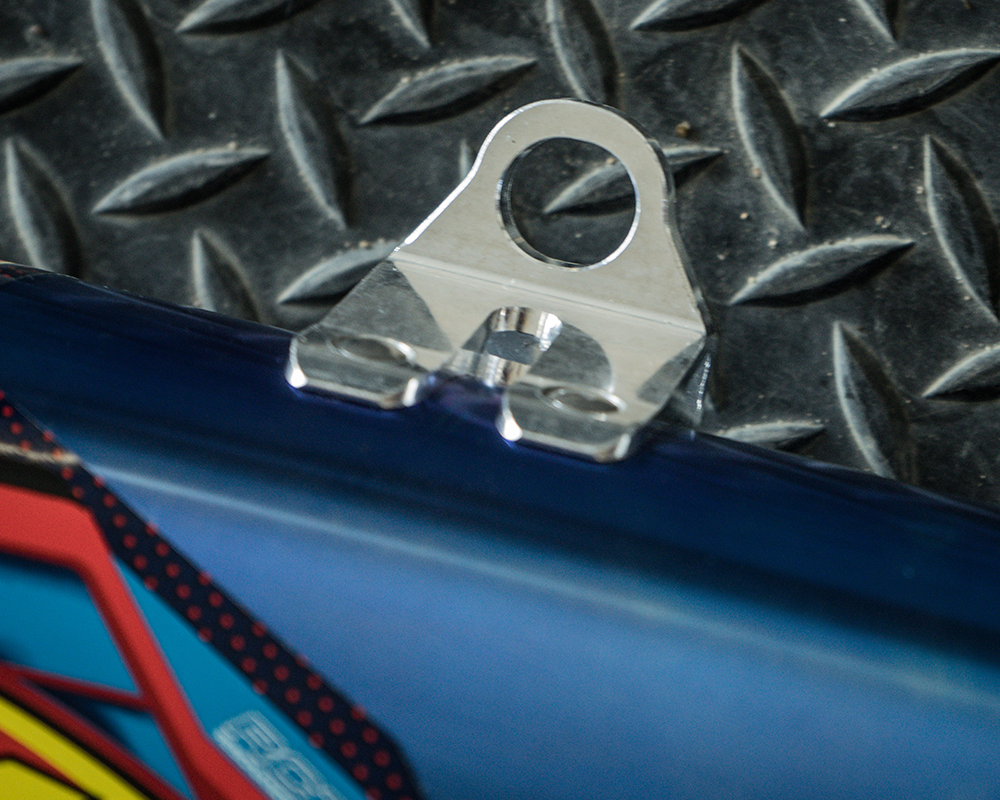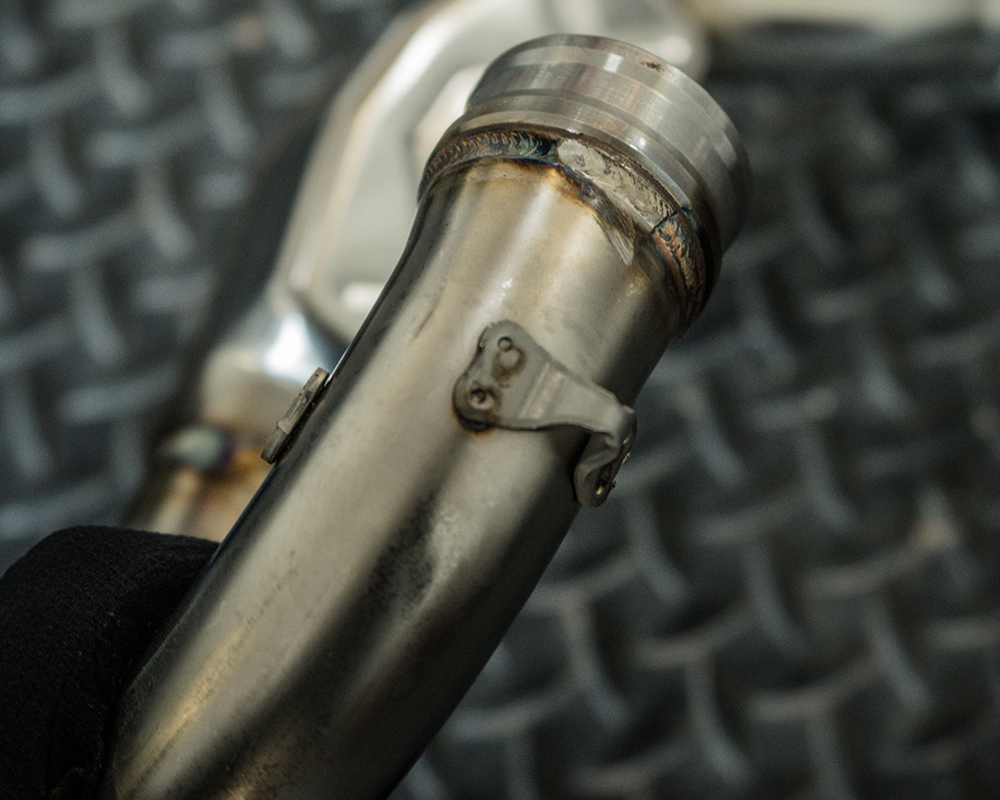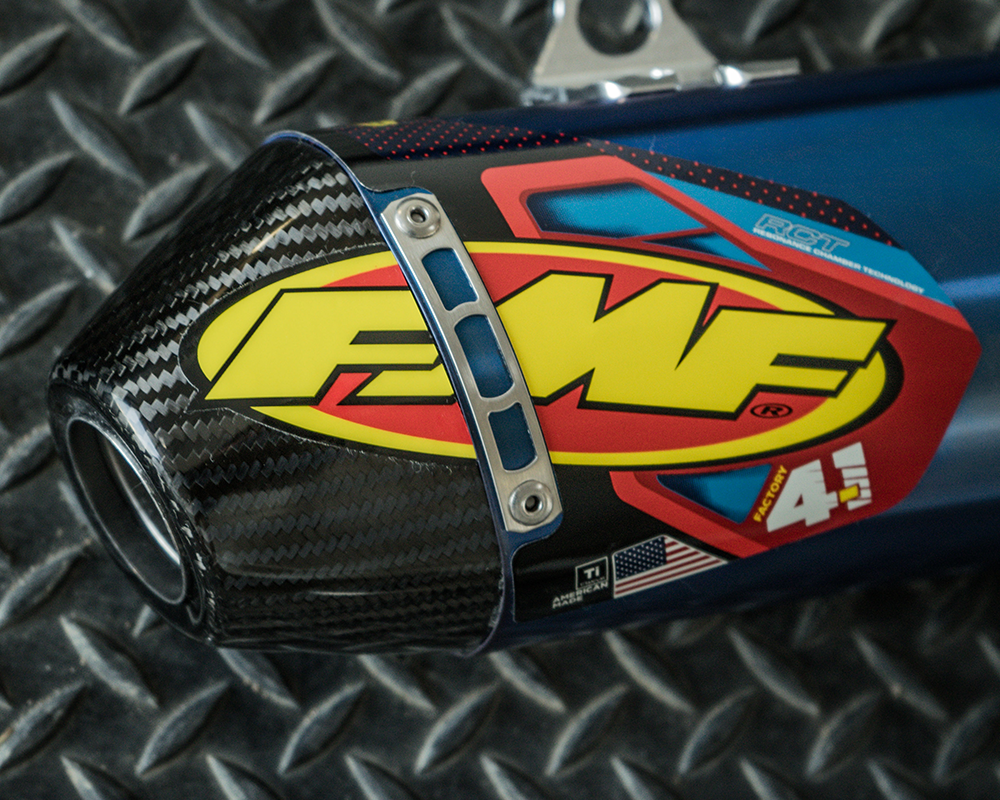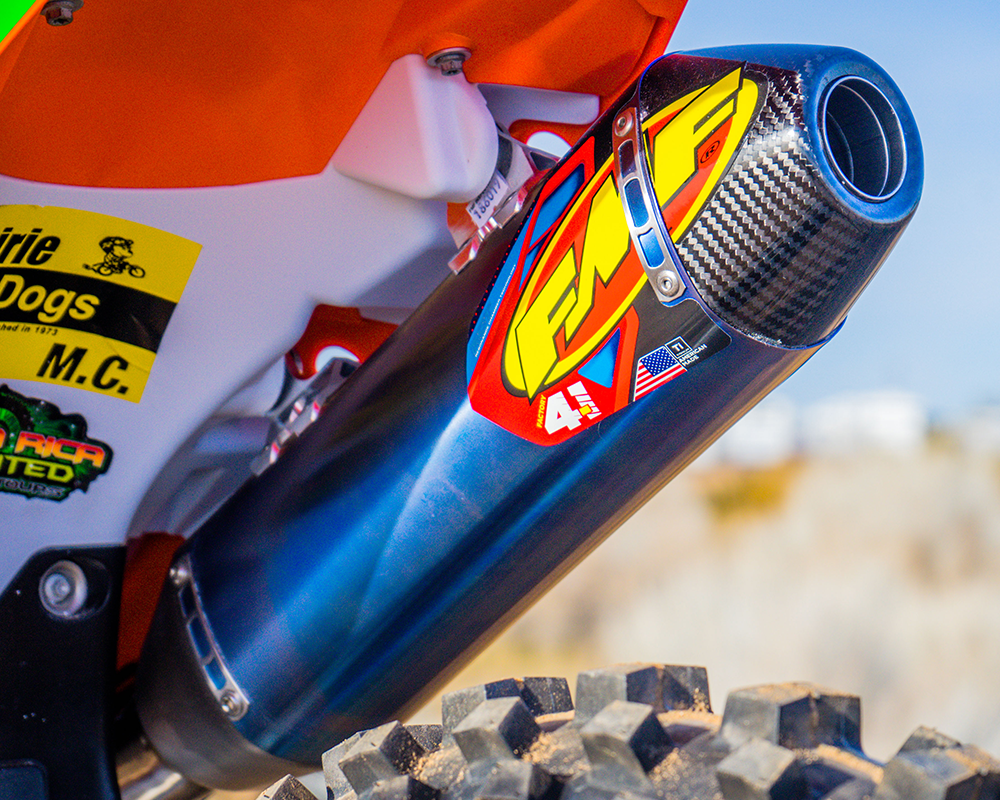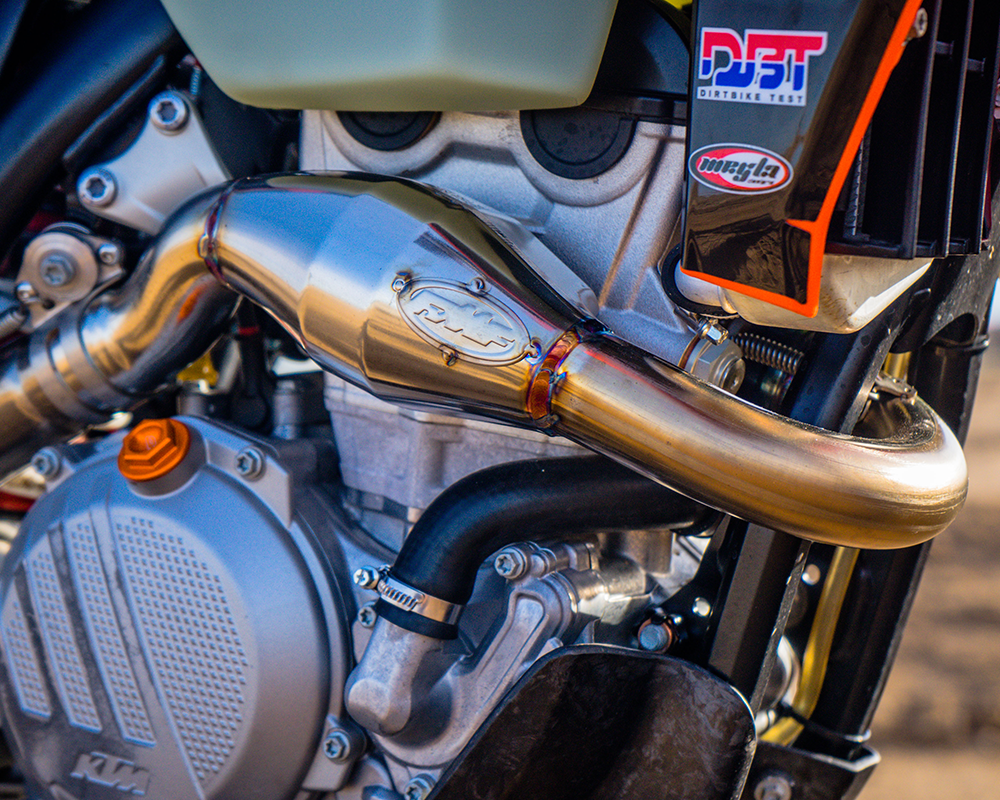FMF Factory 4.1 RCT Exhaust System For KTM 250 XC-F
Company: FMF
Price: $1049.99
- Broadened the power on the high strung KTM motor.
- Tuneable with the insert provided.
- Lightweight and cool looks.
- Simple install.
- Looks can deteriorate over time.
- The titanium is more susceptible to damage over the stainless/aluminum system.
What it is
- FMF's premiere exhaust system.
- Titanium and carbon fiber construction.
- Removeable quiet insert.
FMF offers an array of exhaust options ranging from high end, expensive, lightweight offerings to more cost effective options. We weren’t able to get our hands on our first option, the 4.1 Stainless/Aluminum system, so we were “forced” to take the higher end Titanium version. The 4.1 RCT system boasts FMF’s Resonance Chamber Technology which is claimed to boost power throughout the RPM range. The header and muffler canister is constructed of aerospace grade aluminum while the end cap is made of carbon fiber. The muffler is also blue anodized for a factory look and the whole system saves weight over the stock components. Retail is $1049.99 for the full system, while the Stainless/Aluminum offering comes in at $849.99.
How it works
- Broadened power.
- More bottom-mid power without sacrificing top-end.
- Lightweight.
- Insert changes power delivery/characteristics.
Going all the way back to the 2016 KTM models, we’ve repeated just how good the stock exhaust systems are on the four-strokes. The OEM headers are unique looking and are massive compared to most other stock systems. They mimic what most aftermarket companies do with a ”bomb” style chamber on the header all Helmholtz Resonators, known effective ways of reducing exhaust noise.
To start, installation was a breeze on our KTM. The header only has one bolt and two springs holding it in place. In a matter of seconds, the header is installed. Similarly, the muffler is a two bolt job and is done in a timely manner. Additionally, there is a spring holding the muffler and header together that must be removed and reinstalled upon installation.
We tested the exhaust in stages to see how beneficial each part was in altering the power delivery. First, we employed the muffler with the insert in place to make it a fair comparison between it and the stock screened muffler. We followed that up with installing the header. Lastly, we removed the insert to open up the muffler a little more and see how it affects the power.
The muffler alone broadens the power a fair amount. In stock trim, the 250F is a revver through and through. The higher the RPMs, the faster the bike gets. The FMF muffler brought some of that top end power and delivered it to the bottom-mid range where we feel the bike lacks, especially in comparison to Yamaha’s 250F. The additional bottom-mid allows us to effectively ride a gear higher through corners and short shift the bike without losing ground. We found this especially useful when riding in hard pack, slick conditions or in tighter confines where revving a bike out isn’t possible. The bike does lose a bit of overrev, though we feel it can afford to with the added power down low.
Next up, the header does everything the muffler does, but amplifies it. The Megabomb header really woke up the bottom end to where it was YZ250F-like and lugging wasn’t an issue. Additionally, there was increased throttle response and we felt our throttle hand was more connected to the rear wheel. The header makes most of the gains with this system, but at times it can be too much power. In some cases where traction became a premium, we almost wanted a FMF muffler/stock header combo where there’s enough power to ride a gear high but still be smooth.
Finally, we removed the quiet insert and the first thing we noticed was how much louder the bike got. The whole FMF system itself is louder than stock, and with the insert removed, it gets very loud. On the track and trails, the motor revved out a little quicker and it lost a little bit of the bottom-mid that the FMF system is so good for. In a sense, the insert acts as a form of traction control where the bike hooks up and avoids spinning the rear wheel when inserted into the muffler. Realistically, we’ll run the quiet insert 90% of the time as we feel it tremendously helps the KTM in an area where it lacks. Still, it’s nice to have that removable insert as an extra tuning option to cater the bike more to the terrain you’re riding that day.
The biggest disadvantage with this exhaust? It shows wear and tear much easier due to its blue anodizing. The sticker on the can fades and becomes scratched up and the can itself shows scrapes and scratches very easily. This is where the stainless option will likely trump the more expensive titanium counterpart. However, the full system is tremendously lighter weighing in at 6.6lbs, whereas the stock system comes in at 8.25lbs. The weight savings is due to its titanium and carbon fiber construction throughout most of the build.
Overall, we’re very pleased with the power gains the FMF system brings. Stock the KTM 250 XC-F is very top-end heavy and requires high revving to go anywhere fast. The FMF system brings some much needed power to the bottom to mid range. The top end wasn’t hurt at all, but with the increased power down low, there was less of a surge as it transitioned a little smoother. We also felt better throttle response and the throttle felt more connected to the rear wheel with the 4.1/Megabomb combo installed. If you like to bounce off the rev limiter while you’re riding, the FMF hurts the power ever so slightly, but helps tremendously for those who are smoother on the throttle and like to shift more often than not.
DURABILITY UPDATE: Our FMF exhaust has held up quite well in the 50+ hours we’ve put on it. The stock packing still looks really good for the amount of time on it, and aside from the faded stickers and scratching on the canister, the exhaust is in really good shape. We pulled the packing out expecting to need a repack, but the bottom (closest to the header) which is what gets hottest and deteriorates quickest, was more than fine. We'll continue to monitor the packing and give an update on when it really does need to be repacked.
Leave a Reply


